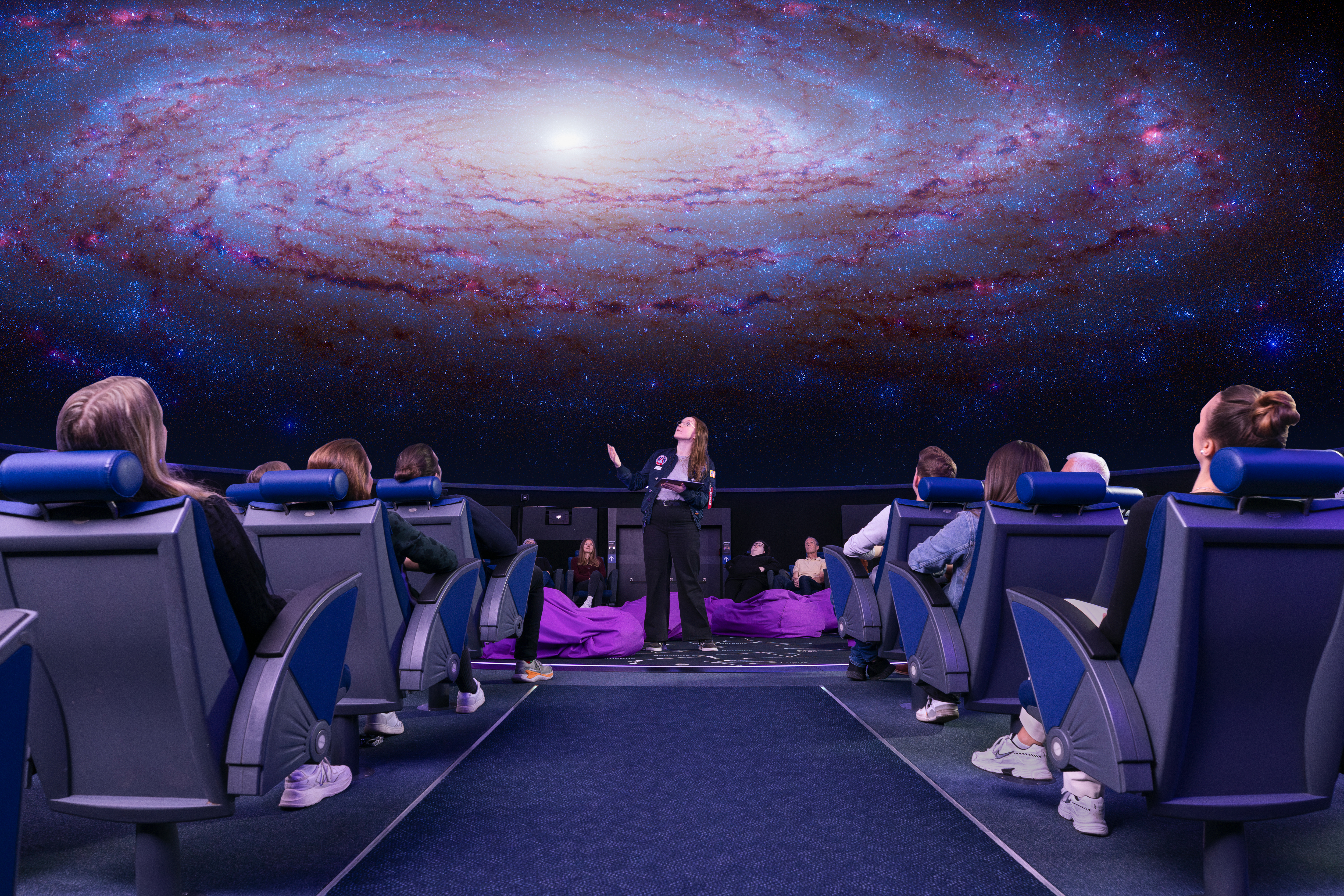
Interview with Marc Horat on the inclusion of planetariums in the UNESCO Intangible Cultural Heritage List.
The Gesellschaft Deutschsprachiger Planetarien e.V. (GDP) wants to make the educational work of planetariums more visible: Now, knowledge transfer in planetariums has been included in the State Inventory of Intangible Cultural Heritage in North Rhine-Westphalia and is a candidate for UNESCO's nationwide list of Intangible Cultural Heritage. In the specialist astronomy portal ORION, Marc Horat explains the significance of this development for Swiss planetariums.
ORION: The planetarium as an institution is celebrating a milestone birthday. The GDP now wants to include planetariums in a UNESCO list of intangible cultural heritage. What would this mean for planetariums in Switzerland?
Marc Horat Planetariums are unique places. What began as a pure simulation of the night sky has developed over the past 100 years into a multimedia experience that has much more to offer than "just" stars and planets. We can now cover the entire spectrum of science under the dome and make it accessible to the public - a trend that can be observed worldwide. There is no other place where you can experience the interface between science, art and entertainment in such an impressive way. In this respect, this initiative to declare the "planetarium" a cultural heritage of mankind is absolutely right. The development towards an actual "science theater", in which culture also has its place, e.g. in the form of concerts, is in full swing. Switzerland's largest planetarium is actively shaping this development and plays a leading role worldwide in establishing new formats. A declaration as a World Heritage Site would certainly give planetariums today the limelight they deserve and would recognize their important role as a link between science and the public.
ORION: In 1919, the physicist Walther Bauersfeld developed the first modern planetarium projector on behalf of Carl Zeiss Jena. Since then, a lot has happened in terms of projectors. Can you give us a brief insight into the evolution of projection technology?
Horat The classic star projectors from Jena were absolute marvels of technology. Never before had mankind succeeded in depicting and simulating events in the firmament in this way. For most of the past 100 years, it was impossible to imagine domes without these devices. The Zeiss projector (model Vs) also provided faithful service in Lucerne for 45 years. Since the beginning of the 2000s, technological development has progressed rapidly: where previously it was necessary to use countless slide projectors to produce images to fill the domes, video technology has now been introduced. Lucerne was one of the first ten installations in the world to be able to show moving images that filled the dome. But this was just the beginning. In addition, increasingly sophisticated, digital real-time rendering systems were developed which, in contrast to the pure night sky from the earth, made it possible to explore the third dimension of space and visualize current research results. The computers became faster, the projectors better and better and so the decision was made in Lucerne in 2013 to rely entirely on digital technology: The star projector was sent into well-deserved retirement and a modern real-time rendering system with 5 high-performance projectors was installed - a decision that I personally have not regretted for a single second so far. We can now explore every corner of the universe interactively with our audience. In purely conceptual terms, however, this brings us back to the original idea from 100 years ago: You can use a single device to show our natural environment and what's happening there. In the 1920s, this was the simulated starry sky and today it is the entire simulated universe from the computer.
The next development step is now imminent: in the fall, a new projection system will be installed in Lucerne, based on high-contrast and bright laser projectors. There will also be a new lighting system and an immersive 3D audio system. But the next big quantum leap in the development of planetariums is already on the horizon: LED domes are now being installed for the first time, which will then complete the transformation from a projection technology to an active Giant Dome Screen.
ORION: A visit to the planetarium at the Swiss Museum of Transport in Lucerne is and always has been a must! But your presentations are far more than just pure entertainment. How do you define what you offer?
Horat A planetarium is defined by an immersive experience. This means that you don't just passively consume the images, but are also part of the scenery thanks to the dome shape - you are literally immersed in it. This is a very powerful tool, because with this connection we manage to combine specialist knowledge with emotions in a simple way. Studies have shown that this form of experience mediation is much more sustainable and that visitors are better able to remember factual content. On the one hand, we are therefore absolutely positioned in the area of edutainment. However, we also show cultural content that actively plays with this immersion and offers an overall experience between visuals and audio - something that cannot be experienced anywhere else in this form. As technology develops, it is now also important to open up new fields and enable new experiences - we have to remain creative and innovative here in order to continue to offer our visitors a unique combination of cutting-edge technology, entertainment and knowledge transfer.
ORION: Astronomy is still not firmly anchored in the curriculum at our schools. Are there any efforts on the part of the planetariums to make a move in this direction in the foreseeable future?
Horat With Curriculum 21, astronomy has regained importance, especially in the lower grades. We can also see this in Lucerne in the rapidly increasing numbers of school visits. Nowhere else can this subject area be taught as effectively as in a planetarium as an extracurricular learning venue. I am therefore personally very confident that many pupils will continue to find their way to us under the domes in the future.
ORION: How individually do you design planetarium presentations for schools? Is it possible for teachers to make requests or do you have special programs that are adapted to the age groups?
Horat We have a large portfolio of content that is interesting for schools. This ranges from thematically appropriate films to completely interactive live shows, where we can respond to the needs and composition of the audience on an ad-hoc basis. The latter is made possible by the real-time capabilities of our computer system - a 3D simulator of the known universe, so to speak, and capable staff who comment live on what is being shown. For example, we were able to fly to Sag A*, the supermassive black hole at the center of the Milky Way, just one hour after the first image was announced and view the image "on site". In this respect, the entire universe is open to our visitors and we try to fulfill as many wishes as possible and provide unique experiences under the dome with shows that are as tailor-made as possible.
Source: Baer, Thomas (2022): Interview with Marc Horat, Director of the Lucerne Planetarium, Orion Online Portal.

Marc Horat
Head of Planetarium